Keeping your work boots clean and well-maintained is essential for both their durability and your personal comfort. Dirty boots can harbor bacteria, cause unpleasant odors, and even contribute to the deterioration of the materials.
In this article, we will provide you with some essential tips and methods for how to keep your work boots clean and ready for action.
The first thing to note is that different materials may require different cleaning methods. Leather, for example, should be cleaned with a proper brush or microfiber cloth, using soap and water or specialized products.
Synthetic materials, on the other hand, might be more forgiving, but still require proper care. Reading the manufacturer’s cleaning guidelines will help you get started with the process.
How to Clean Work Boots
The proper process for cleaning work boots involves:
- Brush off any dirt or debris
- Clean the leather with a cleaning solution
- Deep clean any stains
- Dry thoroughly
- Deodorize the insides
- Inspect for damage
- Condition the leather
To make cleaning your work or safety boots more successful, plan to clean them regularly. Integrating these tips and methods into a consistent routine will not only ensure that your boots stay fresher and more comfortable but will also extend their lifespan. Overall, a well-maintained pair of work boots is an investment in your safety and job performance.
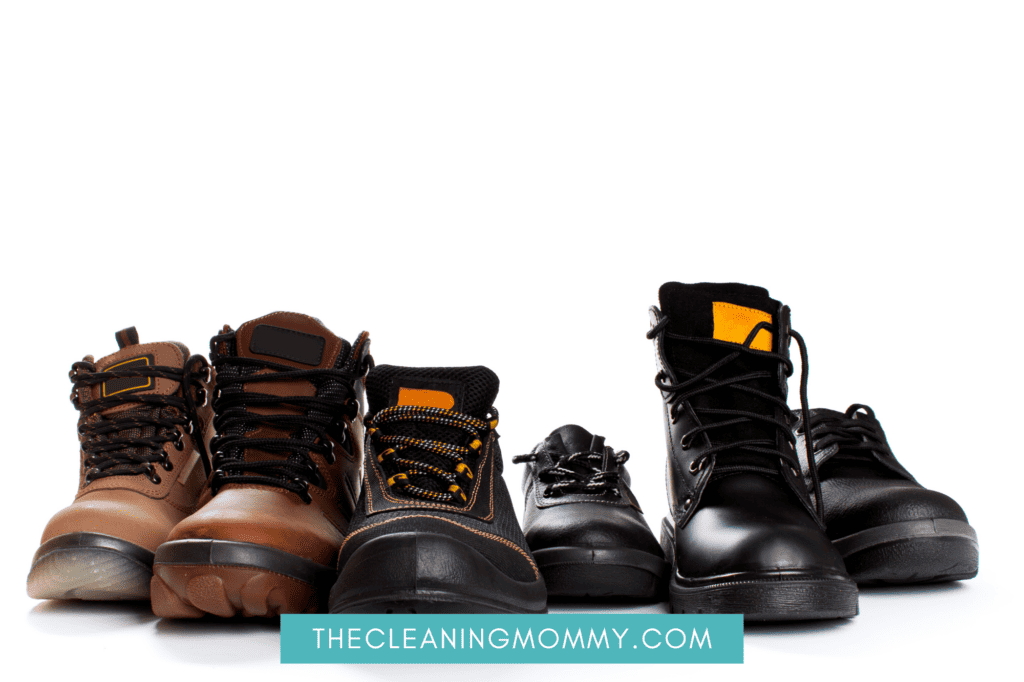

Essential Cleaning Supplies
Brushes
For cleaning work boots, you want to choose a brush that will clear away all the dirt and debris, but will not damage the finish of the boots. The best brush will have soft bristles, like horsehair, or possibly nylon, depending on if you have finished leather or suede boots.
Use the brush first to remove any caked-on dirt or debris from the surface of the boots. Then they are ready for further cleaning.
Mild Soap
For a gentle DIY boot-cleaning solution, mix about one tablespoon dish soap or detergent per cup of water to wash work boots. This can be used with a soft brush to scrub away any dirt on the exterior of the boots. Do not soak the boots too much. Use a soft cloth after to make sure the surface is clean.
White Vinegar
For slightly heavier gunk or stains, you may want to try some white vinegar. Mixing equal parts of vinegar and water will give you the right strength to work deeper into stains, lifting them from the surface. The vinegar smell will dissipate once the boots dry out.
Baking Soda
Baking soda is a great scrubbing agent for stains, as well as an odor eliminator. Sprinkle baking soda on the outside of your wet boots for deep cleaning or to help scrub away stubborn stains. Then once dry, sprinkle some into the inside of boots and let it sit overnight to eliminate stinky foot odor.
Saddle Soap
When working on leather boots, saddle soap is considered one of the best ways to maintain the leather and extend the life of the boots. Saddle soap works into the leather-like lotion on your skin, and softens the leather to keep it from drying out and cracking.
Simply use a damp cloth to massage the soap into the leather surface. Gently rub with a brush if you are using it to clean the surface. Then wipe away the excess and let the boots dry.
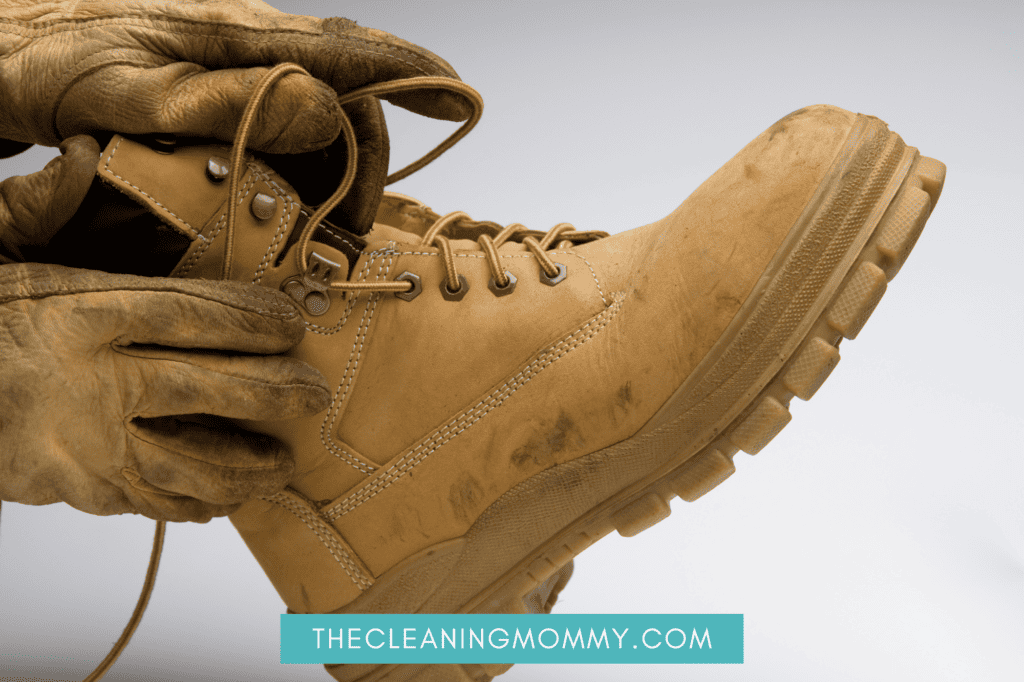
Leather Cleaner
Consider using a dedicated leather cleaner for high-quality leather boots. Follow the manufacturer’s cleaning process on the product to ensure that you clean and protect your leather boots effectively.
Horsehair Brush
A horsehair brush is a great tool for cleaning suede or nubuck work boots. It will help you lift dirt and dust from the boots’ surface without damaging the materials.
Olive Oil
When you do not have a leather conditioner on hand, olive oil makes a good substitute. Simply rub a small amount into the leather and then buff the excess away with a dry lint free cloth. It will polish and shine the boots, while also helping the keep the leather supple. Do not use to clean suede boots.
Mink Oil
Mink oil is another really good product for caring for finished leather. It will keep the leather smooth and supple while helping to avoid dryness and cracking. You can use mink oil very much like saddle soap or olive oil. Just massage a small amount into the leather and then buff with a dry cloth.
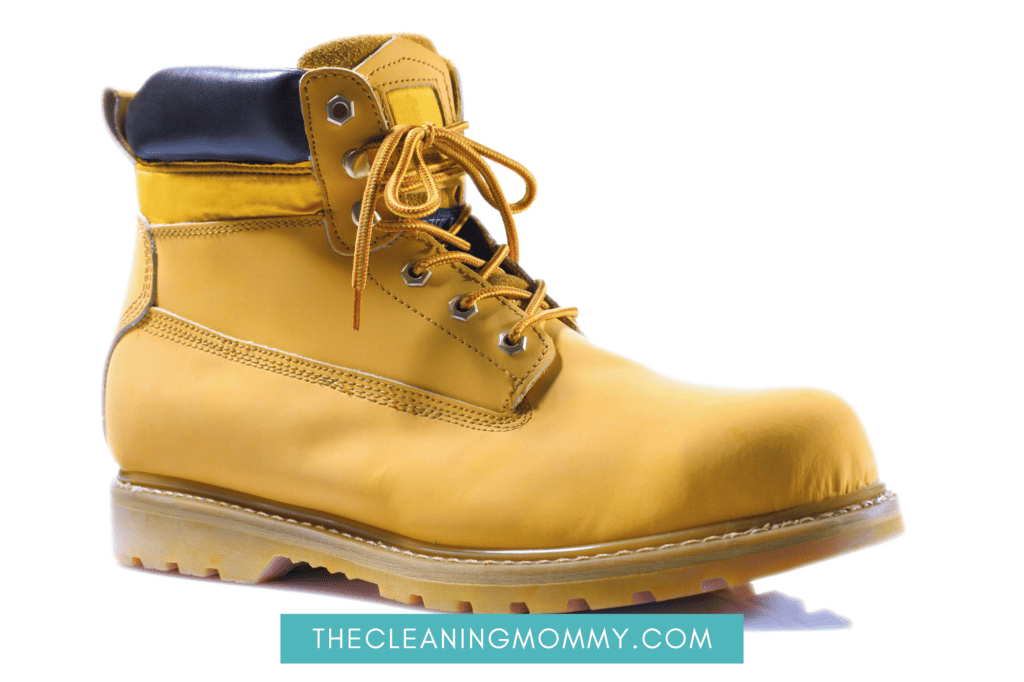
Preparing Your Work Boots for Cleaning
Maintaining the cleanliness of your work boots is important to prolong their lifespan and ensure maximum comfort during usage. Once you have chosen your method and products for cleaning the boots, it is time to prepare them.
Remove Laces
It takes a little more time, but it is very important to remove the laces from your leather work boots before working on them. The laces will restrict your ability to get to all parts of your work boots, especially the tongue. You can also clean the laces separately in the laundry, or by hand.
Clean Loose Debris
While prepping your leather boots, you will want to start by using a brush to buff away any loose debris or caked-on dirt on your leather work boots. Hold your work boots upside down and tap them to knock off dust. You can use a stiffer brush to clean the soles, brushing off any hardened dirt or debris. If you have steel toe boots, make sure not to damage the leather over the toes.
Inspect for Damage
Once you have cleaned your leather boots, take a few minutes to inspect them for damage. Broken sewing, loose grommets, tears in the leather, or separation of the soles can weaken your work boots and expose you to injuries. If there is any damage to your leather boots, consider having them repaired or just replacing them with a new pair of work boots.
As you can see, cleaning your work boots is not terribly difficult to do.
By following these simple steps, and repeating them regularly, you can keep your work boots in top shape and for a longer time.
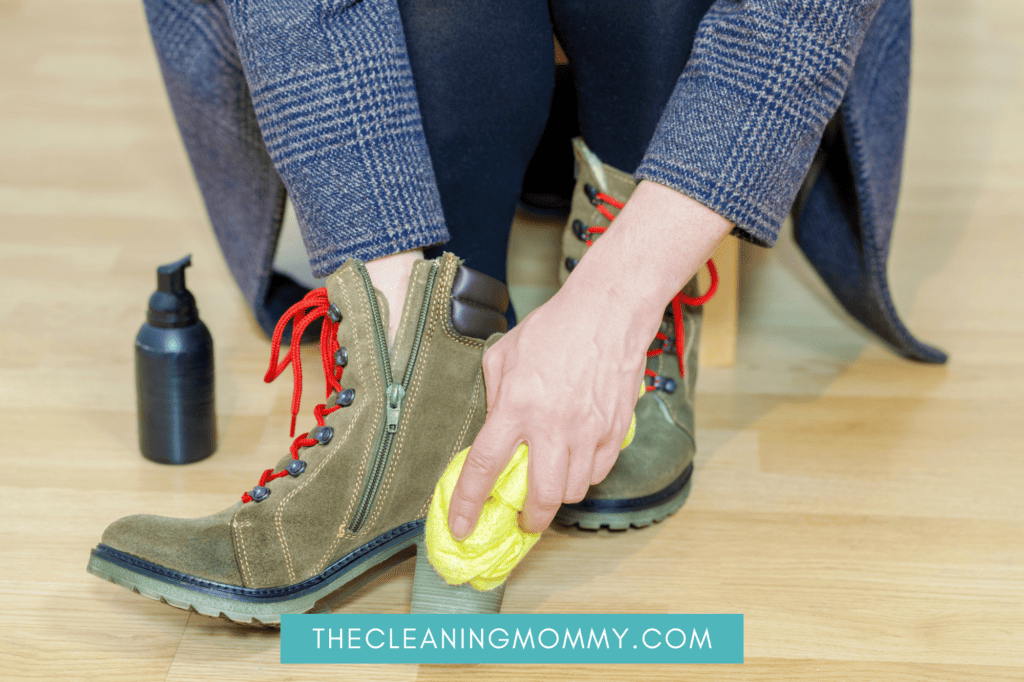
Cleaning Different Types of Work Boots
Leather Work Boots
To maintain your leather work boots, start by removing loose dirt and debris with a soft-bristled brush. Then, create a cleaning solution by mixing a small amount of mild soap and water. Dip a soft cloth into the solution, wring it out, and gently wipe your boots, taking care not to saturate the leather.
Afterwards, dry them with a clean, dry cloth. Finally, apply a leather conditioner to keep the material soft and supple. Be sure to follow the manufacturer’s instructions on the product label.
Suede and Nubuck Work Boots
For suede boots and nubuck work boots, you’ll need a slightly different approach. Begin by brushing off any surface dirt using a suede or nubuck cleaning brush. Next, apply a suede and nubuck cleaner– use a gentle brushing motion, never soaking the material. Allow the suede boots to air dry completely, away from direct heat or sunlight.
To protect your suede and nubuck boots from future stains, consider using a protectant spray specifically designed for these materials. Regularly treating your boots with this type of spray will help prevent water, oil, and dirt from embedding into the material.
Synthetic and Steel Toe Boots
For synthetic work boots and steel toe boots, it’s essential to follow proper cleaning procedures to prolong their durability. Start by removing any dirt and debris from the exterior of the boots. In most cases, wiping them down with a damp cloth should suffice.
If your steel toe boots are particularly dirty, you can use a soft-bristled brush and some mild soap to gently scrub them clean.
For steel toe boots, you may want to additionally polish the toe cap with metal polish to maintain a shiny appearance. When cleaning your synthetic boots, always allow them to air dry completely before wearing them again.
By following these specific care instructions for each type of work boot material, you’ll keep them looking and functioning their best.
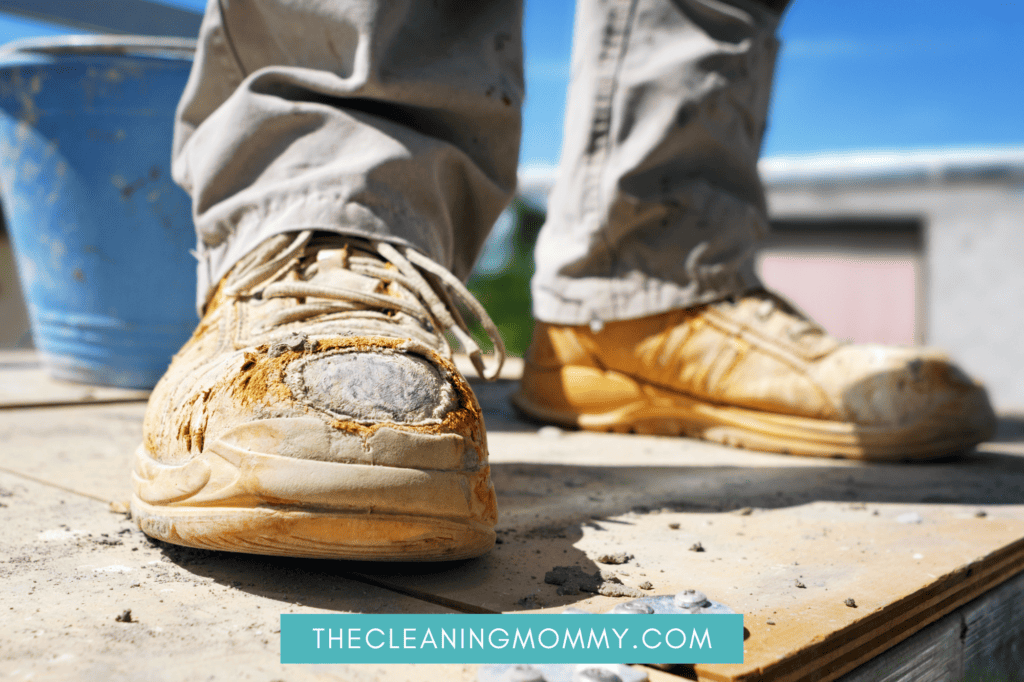
Removing Stains and Odors
Ink Stains
We never know quite how it happens, but work boots seem to always get ink on them. These stains can be a real difficulty, but they can be removed.
First, use a few drops of rubbing alcohol with a clean cloth to dab into the stain. The alcohol will break down the ink and make it easier to remove. Then use a damp cloth to remove the remaining ink. Repeat the same process as necessary.
Oil and Grease Stains
Grease and oil stains can be difficult as well, but with the right techniques, you can eliminate then from your boots. Start by sprinkling absorbent powder, such as cornstarch or talcum powder, over the oil or grease stain. Let the powder sit on the stain for at least 30 minutes to allow it to absorb as much of the oil or grease as possible.
Then, gently brush away the powder with an old toothbrush or soft brush. If the stain persists, you can try using a small amount of mild detergent mixed with warm water to clean the area, being careful not to saturate the work boot.
Finally, wipe the area clean with a damp cloth and allow your boots to air dry.
Smelly Work Boots
Smelly work boots can be a sign of bacteria buildup inside the boot. To combat this problem, first, remove the insoles from the inside of boots and wash them with a mild detergent and warm water solution. Allow the insoles to air dry completely before reinserting them into your work boots.
For the interior of your boots, sprinkle some baking soda or talcum powder to help absorb odors and moisture. Leave the powder inside your steel toe boots for at least a few hours or overnight if possible.
After that, simply shake out the excess powder from your boots. Maintaining proper hygiene and keeping your boots and socks dry can also help prevent smelly work boots.
Using these methods, you can effectively remove ink stains, oil and grease stains, and odors from your work boots, prolonging their lifespan and ensuring they always look their best.
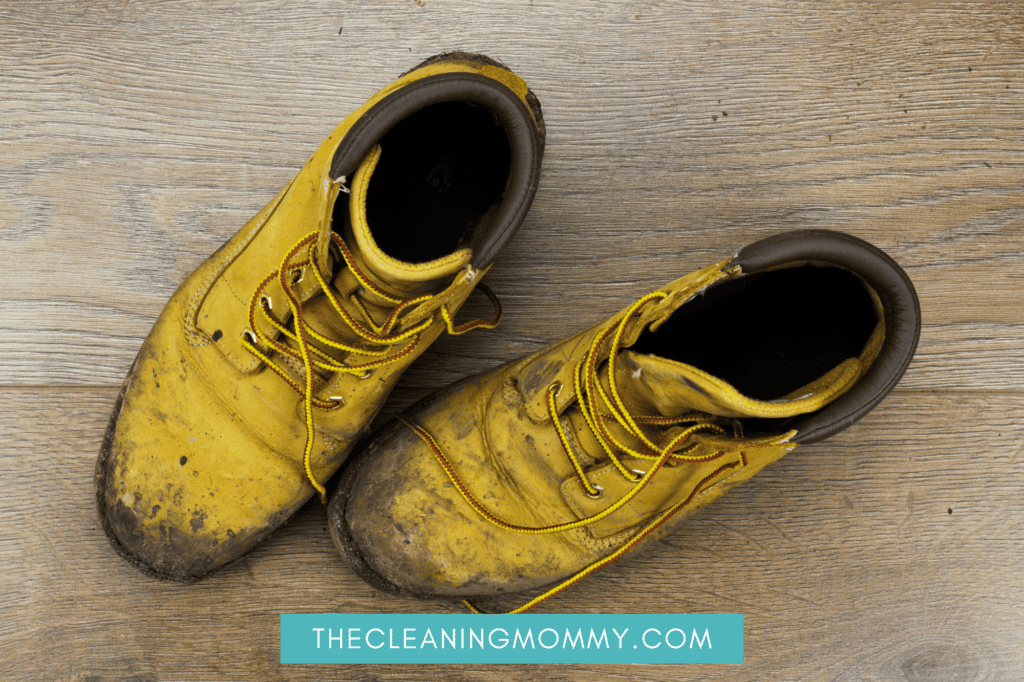
How To Clean The Soles Of Your Boots
Synthetic and rubber soles are the two most prevalent types of work boot soles. Both varieties may be cleaned with warm water and regular kitchen soap, you do not need saddle soap.
If you want to make sure your soles are completely dirt-free, clean them with an extra-hard brush. You should also clean the spaces between the treads to ensure that no gravel, loose dirt or tiny stones are caught there, and this can take a long time but it is an effective way.
After you’ve finished washing with mild soap the soles, let them air dry. This method may take a little longer, but you should not dry them with a hair dryer or heat since high temperatures can cause warping.
Proper Drying and Conditioning
Air-Dry the Boots
After cleaning your work boots, it’s important to air-dry them properly. Avoid using a dryer or any direct heat source, as this can damage the materials and cause them to wear out prematurely. Instead, find a well-ventilated area, preferably indoors, to let your boots dry naturally.
If your boots are leather, stuff them with newspaper or a dry cloth to help maintain their shape and absorb any excess moisture.
Apply Conditioner
Once your boots are completely dry, it’s time to apply a conditioner on the clean leather to keep it soft, supple, and well-maintained. For leather work boots, look for a high-quality leather conditioner that is specifically designed for the type of leather your boots are made from.
Apply the conditioner evenly across the entire boot with a cloth, brush, or sponge. For synthetic materials, consult the manufacturer’s recommendations for conditioning products.
Polish Leather Boots
If you have leather work boots, polishing them not only enhances their appearance but also provides a protective layer that guards against everyday wear and tear. To polish your leather boots:
- Choose a polish that matches the color of your boots.
- Apply a small amount of polish with a soft cloth or polishing brush in circular motions, covering the entire surface of each boot.
- Allow the polish to dry for a few minutes.
- Buff the boots with a clean, soft cloth or a dedicated buffing brush until you achieve the desired shine.
By following these steps and properly drying and conditioning your work boots, you’ll extend their lifespan and keep them looking and performing at their best.
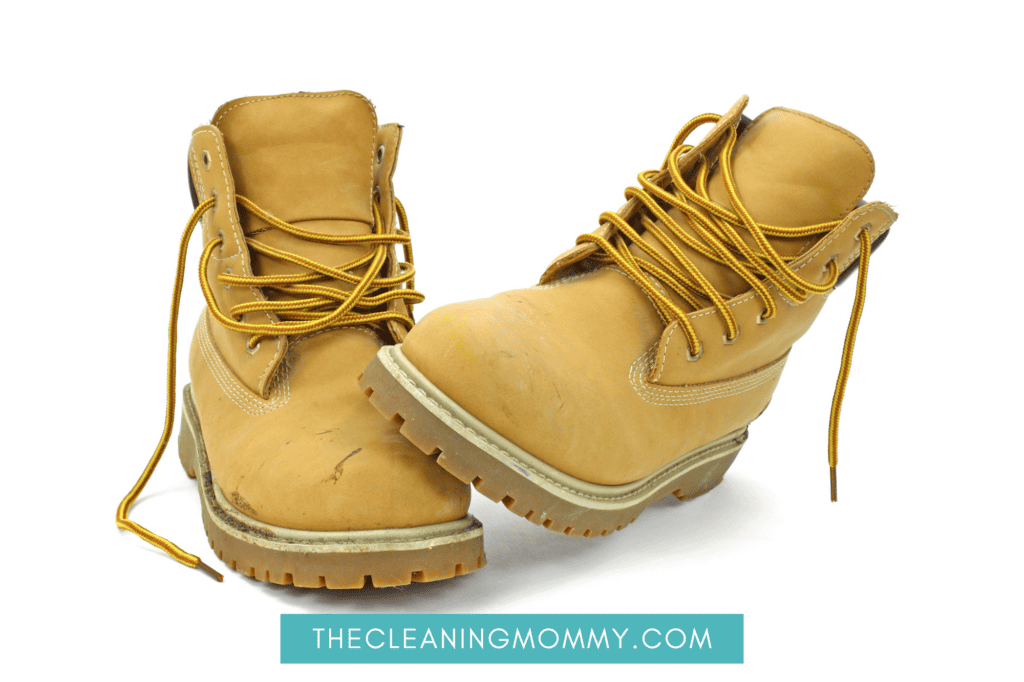
Maintaining the Inside of the Boots
Cleaning the Insoles
To keep the inside of your work boots fresh, it’s essential to regularly clean your insoles. First, remove the insoles from your boots. Then, prepare a mixture of low-pH shampoo or mild soap detergent with tap water. Using a soft brush or sponge, gently scrub the insoles with the soapy water.
Thoroughly rinse the insoles with clean tap water, removing any soap residue. Make sure to avoid soaking the insoles as over-saturation could lead to damage. Allow the insoles to air-dry in a well-ventilated area away from direct sunlight or heat sources.
Note: Avoid machine washing your insoles as it can cause damage or shrinkage.
Neutralizing Odors
Work boots can sometimes harbor unpleasant odors. To effectively neutralize these smells, consider the following tips:
- Baking soda: Sprinkle a small amount of baking soda inside your work boot overnight. The baking soda will absorb any lingering odors. In the morning, be sure to empty out the excess powder before wearing your boots.
- Essential oils: Add a few drops of your favorite essential oil onto a cotton ball or small cloth. Place the scented cotton ball inside each boot and let it sit overnight. This will help to freshen up the scent in your boots.
By regularly maintaining the inside of your boots, you can enjoy increased comfort and cleanliness while prolonging their overall lifespan.
More Like this
- How To Clean Used Shoes
- How to Clean Dress Shoes Without Polish
- How to Hand-Wash and Machine-Wash TOMS
- How To Clean Loafers
- How To Clean Memory Foam Shoes
- How to get lip floss out of clothes
- How to remove sweat stains from a hat

Grainne Foley
Grainne Foley is a wife and mother of 2 great kids. During her 5 years of full time RV travel, Grainne learned to become very efficient at household chores, in order to make time for family adventures. Now, back in a house, she has continued to create tools and techniques to help others lighten the load of household organization and cleaning.
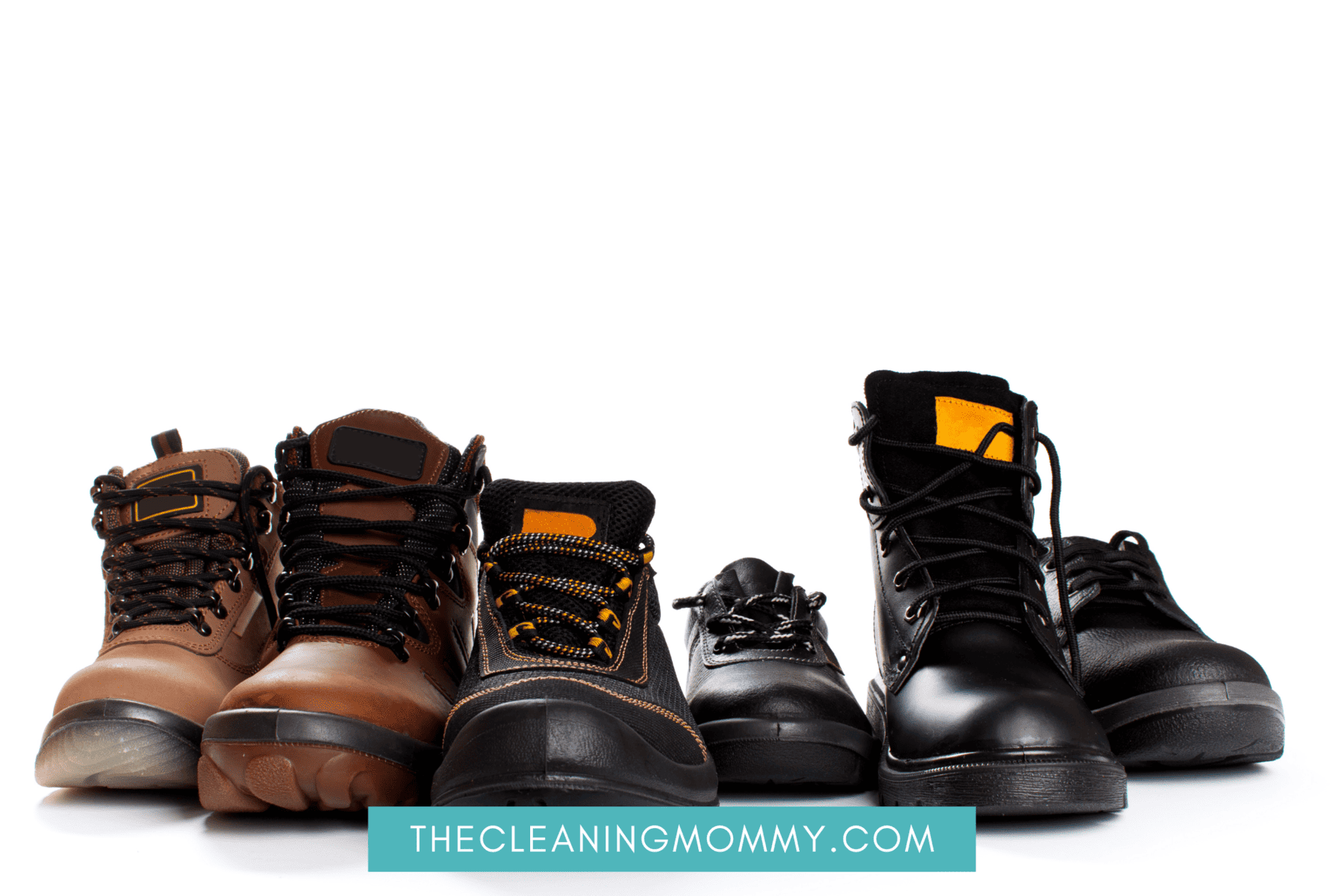
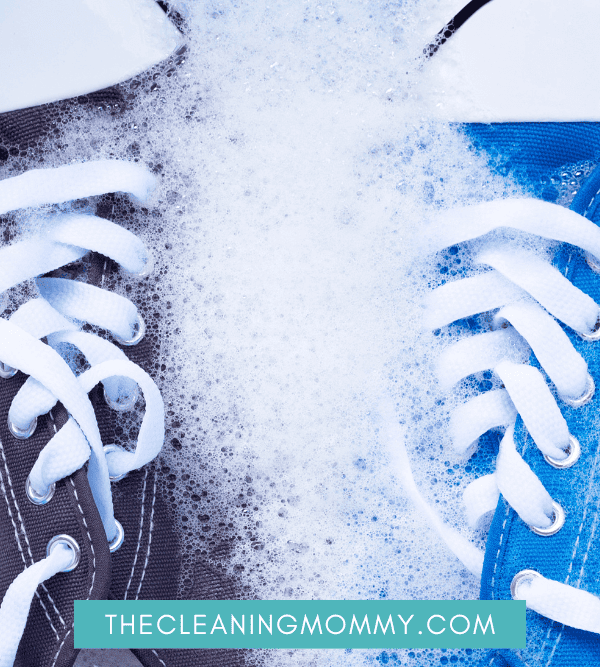

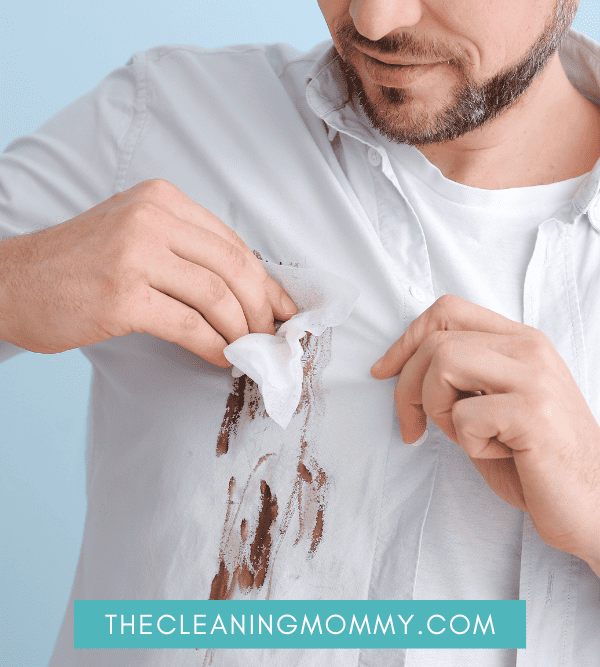
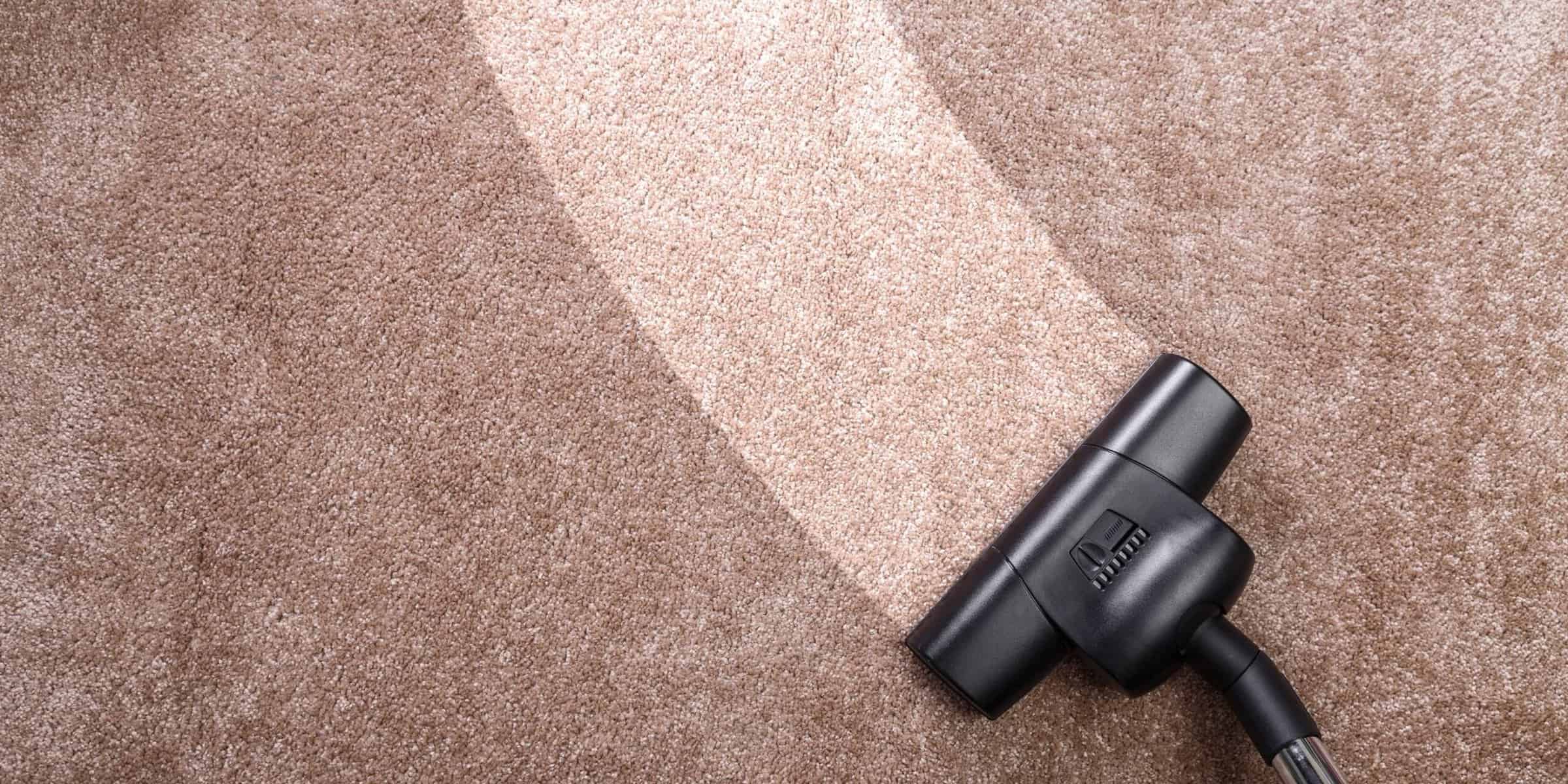
Leave a Reply